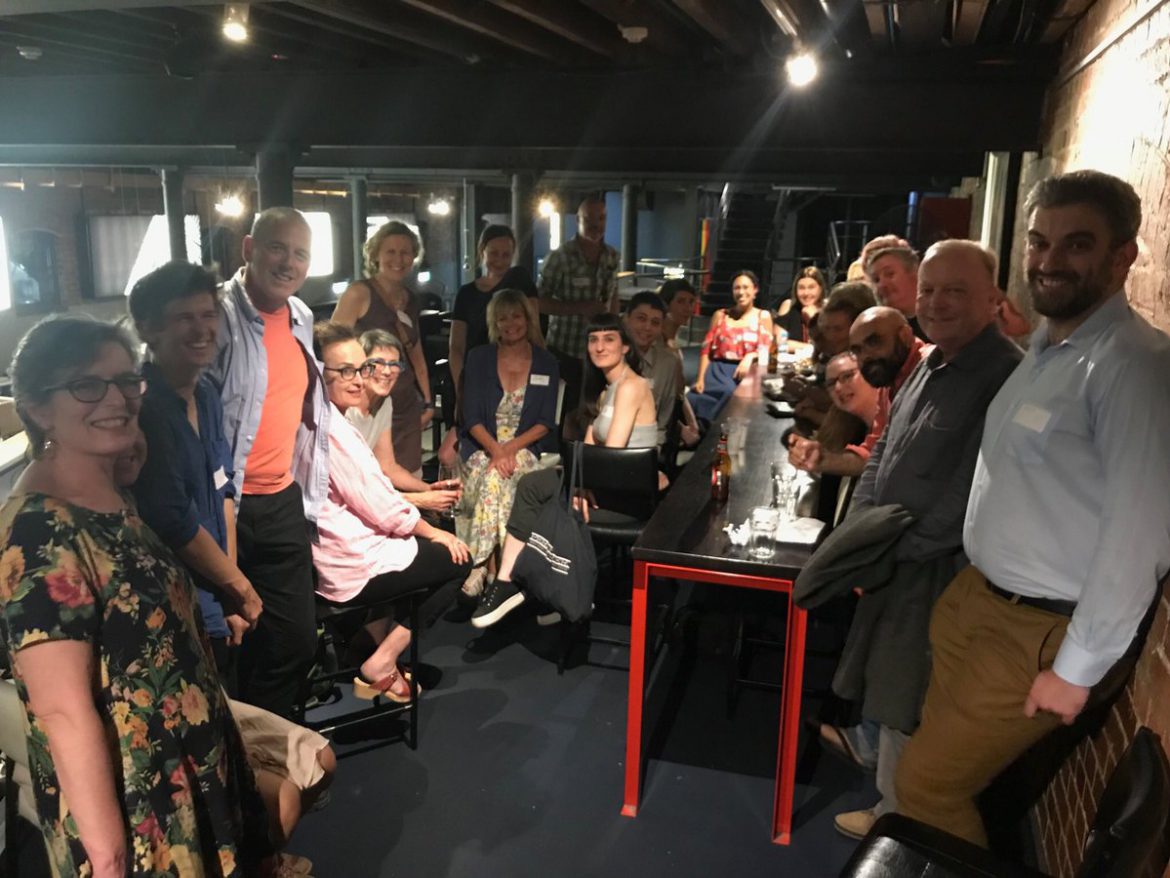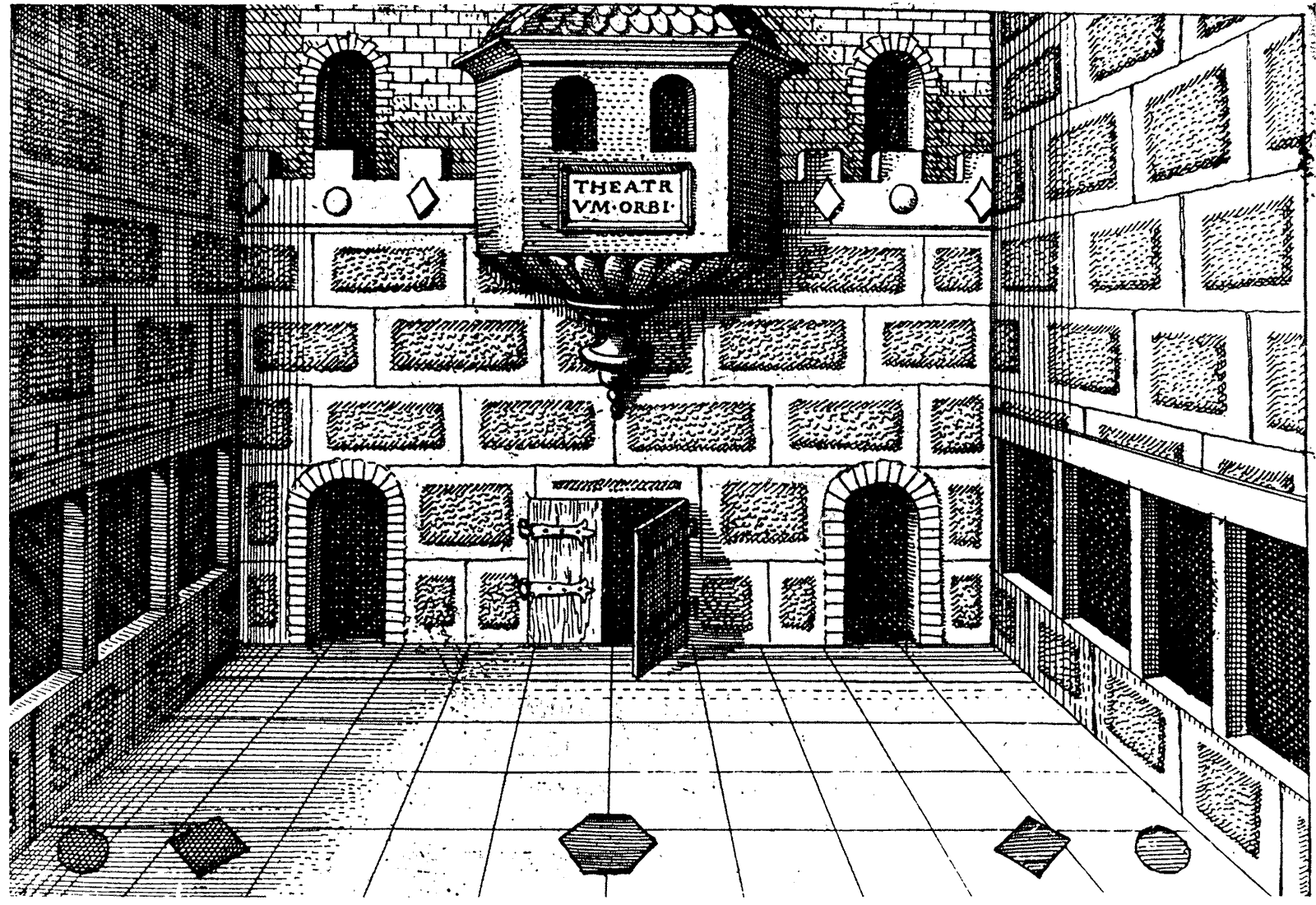-
Alison Croggon and
 Ben Keene are now friends 7 years, 4 months ago
Ben Keene are now friends 7 years, 4 months ago -
Alison Croggon and
 Daniel Keene are now friends 7 years, 4 months ago
Daniel Keene are now friends 7 years, 4 months ago -
Daniel Keene changed their profile picture 7 years, 4 months ago
-
Daniel Keene and
 Ben Keene are now friends 7 years, 4 months ago
Ben Keene are now friends 7 years, 4 months ago -
Alison Croggon started the topic READ FIRST: Comments and users policy in the forum General Discussion 7 years, 4 months ago
Witness Forums are not viewable by non-members.
Please note these general guidelines:
Witness aims to be an exemplary space.
We encourage honest, even passionate, discussion. We distinguish clearly between respectful disagreement and abusive behaviour, because they’re not difficult to tell apart.
We don’t like policing people, but there are…[Read more]
-
Alison Croggon wrote a new post 7 years, 4 months ago
With our Stage Partners, Witness has put together a program of Live Nights – basically, Book Club for theatre – throughout 2018. On Live Nights, Witness members book to see a show together, and then meet up […]

-
Alison Croggon changed their profile picture 7 years, 4 months ago
-
Alison Croggon wrote a new post 7 years, 5 months ago
Welcome to Witness, a new home for discussion of Australian performance. Have a look around – we’re celebrating our first month with free access to all our editorial.
Witness is the brainchild of me (Alison […]

-
Alison Croggon changed their profile picture 7 years, 5 months ago
-
Alison Croggon wrote a new post 7 years, 6 months ago
Heads up, Melbourne theatrenauts! This is your invitation to come to the theatre with Alison and Rob.
Our plan next year is to hold regular meet-ups, in which we all go together to see a show and talk about it […]

-
Alison Croggon wrote a new post 7 years, 7 months ago
Alison Croggon looks at sexual harassment in the performing arts. Australia, we have a problem.
I don’t want to talk about Harvey Weinstein, but it’s also impossible not to talk about him. In less than a mont […]
-
Alison Croggon wrote a new post 7 years, 8 months ago
We do not tell our story well. The system that supports us is patchy, ad hoc and antiquated. Robert Reid reflects on the structural malaise affecting our arts culture.
There is an anxiety that I struggle to […]
-
I’m VERY late to this & I probably need to review the article with more scrutiny (I think it’s a great article!), but I think there’s a danger lurking here – especially in regard to the “Hibberd model”.
While I agree that, as Hibberd points out, there was & is a real need to move away from stifling colonialist aspects of theatre-making & arts policies toward inclusive practices & acceptance of diversity from policy to playing, I disagree completely with the notion of what has since become an obvious leaning toward an “Australian” “de-facto” anything. That is a slippery slope, because WHO determines themselves the most “Australian”, what GROUP determines the values that I, for example, as an independent artist SHOULD have, what kind of COUNCIL of “elders” can make those sorts of decisions? Leading to what de-facto standards of diversity & quality?
It seems that if you pull away from one set of values, without changing a fundamental WAY of thinking, you’re going to hit another set smack bang into a brick wall – again not fit for purpose. And all the old over-arching ways of thinking will just have new clothes & the old argument will merely include ever-newer names, terms, definitions, leading to essentially the same closed systems. New clothes for old ways of thinking. And this is the very knot of the problem.
To really grapple with changing needs we need to have a fluid & permeable frame that is nimble, responds to specific needs, that values plurality, & focuses with a level head on policies that allow art-forms to be what they need to be. Meaning, that art-forms/values/practices/companies/artists must not be forced into shapes that reflect outside alien policies but are free to reflect what should be reflected: the diverse practices of the art-form, whatever that may be, for companies to be free to fulfil the needs of their practices, rather than fulfil political agendas, whether federal or state, or targeted audience demographics – what a furphy that is! Talk about misleading us into thinking spectators are some sort of homogenous group rather than as thinking independent individuals who change & develop (hopefully) as we enter different stages of life.
So let’s for a moment go back to a time when wanky words didn’t get so much in the way, when things were a bit rougher. During the Renaissance & Elizabethan times, the theatre, for example, was a rich, very eclectic mixture of the “highest” aristocratic based theatre patronised by the wealthy down to the “lowliest” single performer strutting their stuff on the streets living on charity. It was a market-place of conflicting ideas & styles. In its very roughness there was an openness to ideas, forms, rituals, enactments, performances. It’s stages were large theatres, chamber spaces, intimate gatherings, two planks & a passion, all sorts. All sort of ideas, concepts, styles were in the mix. I believe what we need today is exactly the same roughness.
When new names are exchanged for old ones towards anything “de-facto”, the inevitable problem reasserts itself ie. towards a “national guideline”. Brr, I can think of nothing more onerous. This, to me, is the “systemic drag” that Robert Reid states so well. We need openness to the idea of DIFFERENCE rather than different. Implicit in this notion is the presence of LIFE. We need to encourage that. We need imagination itself, as Daniel Keene mentioned in a public address not too long ago, to be “seditious” even to the values it holds dearly, even to the art form itself, rather than give credence to demographics & politicisation of the arts. These are only skin-deep momentary measures that, sooner or later, will again be seen to be not fit for purpose. The kind of sedition I’m referring to is always on the move forwards, keeps things healthy, allows us to be nourished by different tastes, not forever chewing on the same bone, for companies, artists & communities.
Perhaps, a way forwards to a more nimble, efficient guidance to plurality of funding, of resources, of imaginative ideas & practices by arts companies & individuals, imagination & discussion must come from every sector so that the playing field can be as equal as possible. So that we don’t get a situation where Ozco awards 3 circus companies in one year funding or continued funding while thoughtful, imaginative, un-classifiable theatre projects get not even a look in. That’s taking demographics too far.
Hibberd’s ideas make sense, but in the very repudiation of the structures he is arguing against there is an indigestible problem: emperor’s new clothes. In this Trump-driven age of lies, it is of paramount importance to believe in what you actually see, not what you are told to see.
-
Hey Alan
I think we agree mostly. I’m not a fan of the hierarchical structures baked into the theatre community that an actual National Theatre Company would represent the “pinnacle” of. I tend to think that hierarchical structures like national – state – local theatre companies are inimical to performance as a social practice. They serve market forces and authorities far better than the art and the community.
I do think there is currently a de facto national theatre mindset about the current model and i think we agree that, while it’s been useful in the past – sort of, not really – it’s certainly no longer fit to purpose. I turn to the Hibberd model as an example of other ways the practice of art by the community can be structured, rather than as any kind of blueprint for the future. Ultimately how the community carries out the practice of performance will shift and change over time and the structures that seem so permanent now will not prove to be.
A funding model that can recognize those kinds of shifts and respond to support them is unlikely to be anything like the size of an Ozco – a few people making decisions on behalf of a comparatively vast community. I don’t know what that funding or support mechanism will be really but i do think that so far, the solutions founded either on the market or on the government have proven to be unsustainable in the long run. What’s attractive in Hibberd’s model is its focus on the micro level of the system, which i think translates into local communities involved in the production of performance, verses the macro, which is one big company trying to cater to the amorphous “Australian’s” you’re right to be suspicious of.
thanks for writing
🙂R
-
Hi there Robert,
Thanks for your thoughts & article. I hope this is not taking you too far back! But I do think it’s an important topic. Actually I think it’s critical. Because policies, bureaucracies, as we all know, can & do affect people’s, certainly artists’ lives, for good &/or ill. Whether artists can even sustain themselves enough to pay the rent. The situation is dire, no politician really cares or takes seriously the arts in general (except for suck-up parties at the end of some gala performance) & this is confirmed by the level of poverty in the general population let alone the artistic one in such a young country – it’s truly breathtaking. There are also many unused spaces littered about our major cities that could be turned into living & working studios, performance spaces, workshop venues, etc. But there is no political will to take any of this seriously. And it’s for another conversation.
I think presenting Hibberd’s views is valuable. His ideas do make sense & he is one of only a few people that has taken the argument from, as you state, the macro right through to the micro & I understand your cohesive reasons for presenting the case. I agree that no “blueprint” can ever be a complete answer, it is a falsity anyway, it may work for robots in certain automotive fields & such like (& the way things are going in AI, it may not even there!) & inanimate objects, that don’t change, but as for human beings blueprints are certain to fail.
I don’t know what the actual mechanisms might be either. But I come back to DIFFERENCE as INCLUSION. I believe this understanding is the only legitimate way forward. It implies DIVERSITY in its widest sense. In relation to the Arts for me this means giving equal voice to the NEEDS of arts practice, that what may work for a large company may be anathema to a small one. That focusing even further on resources being available to individual performers to develop their work & to mount productions should certainly be more available to enrich the art as well as the communities that benefit when they witness it.
Perhaps a way to funding can be incorporated from large to medium companies providing a portion of their income (relative to earning) to small ones as part of the democratising of our institutions so that there is more inter-institutional dialogue & give & take. And ALL artistic companies from every discipline should be involved. Certainly the corporate world could assist as well. Corporations will not be dying off soon so maybe they can help. For these, I’m talking about skimming off some of the fat & the re-distribution of some of those millions. There is so much profit floating around that stakeholders can still be satisfied WHILE companies give back to the wider community. Perhaps I’m being naive here..
One point I have to mention about national theatres. I worked at the National Theatre in London as an actor & an usher way back in the ’90’s. I saw this as a great way to learn my craft at that level through direct observation, lots of shows etc. Obviously I wasn’t present at policy discussions. But I did enjoy the sheer diversity of its output from Greek classical texts, to Shakespeare, to revitalising modern British/American/European iconic texts from Priestley to Wilde to Bond to Hare to Mamet (& many international writers), providing a platform for new English writing which focused on local politics & events. Aside from actual performances there were Platform Papers with lunchtime talks with local & international directors, theatre-makers, actors, designers, musicians, etc. What appealed to me was the diversity & inclusion of ideas & theatre-making from various areas of the profession. As an audience member I felt catered to. That whatever the shortcomings of a national “something”, it was providing a broad platform of different works providing a huge number of jobs on both sides of the performing platform. This has value all down the line, it creates a history of excellence (in this case) & learning can build on learning, work on work. I have often felt here in this country that because, for example, Ozco determines the financial structures so tightly (because of lack of funding from the top), are so dependent on “demographics”, that we, as audiences, are often deprived of the creative mine-field that is under our noses from our local artists. Who knows how many brilliant shows, ideas, forms, directions have lain dormant & rotted away in obscurity because of such narrow mindsets that unwieldy structures like Ozco inevitably present? They are like dinosaurs stomping on the nourishment they seek because their heads are so far above the ground their eyes can’t distinguish what is below.
So the point I’m making about this particular National Theatre I witnessed was that they fulfilled a very valuable role, that of a creative, energetic, hub. Yes it was more or less text-based, yes it was centralised (though they did tour), but it was identifiable, it had heart, & due to their large budget (never large enough according to them) could afford to do what they did. Whether you agree with its standards, practices, values is another matter. But it gave London an identifiable home & spirit, it encouraged local artists, audiences both local & abroad, & international artists by their presence became unofficial mentors of sorts to younger artists. There were workshops conducted by local directors with local actors often looking at non-text based ways of working & it became a learning & practice hub. It joined with Festivals to create further outreach. And all these are a form of visible practical research that benefits everyone. With many creative spin-offs. Unfortunately it also depends on the disposition of whoever heads it at the top & again this a field for another conversation.
No national anything can be all things to all people, but it did, as I saw it, offer creative value. There are all sorts of positive areas for change here. It is not further evidence of Cringe, which would mean a slavish adoption, but rather a plea to learn what works from other models in the world & instil those life-giving principles. It asks for a different mind-set, that of inclusion of difference itself, it points to broader creative opportunities for lively & positive change toward sustainable artistic practice & funding for lasting benefit for artists & audiences.
-
PS: can we get some white space between paras?? 😊
-
-
Alison Croggon wrote a new post 7 years, 9 months ago
‘Think of all the great art!’ Let’s not. Alison Croggon ponders art in dark times.
After the election of Donald Trump, a meme started doing the rounds on social media. Well, at least there’s one compensation, pe […]
-
Your prescience is disturbing.
When plague descends and cities burn,
Then, then to Art the people turn.
When cities burn and plague descends,
On Art recovery depends.-
Thanks Matthew
-
-
This is a beautiful, prescient piece Alison that I have just stumbled across. Thank you. David
-
Thanks so much, David! I hope you’re keeping well in these bleak times.
-
-
Thank you Alison. That is a profoundly ethical and challenging analysis. I didn’t realise you had written that three years ago until I hit the comments. That is a real Cassandra moment! Hope you are handling the current strangeness.
-
-
Alison Croggon wrote a new post 7 years, 10 months ago
Australian performance. Why do we have it at all?
“Theatre’s never really had the best of reputations: it’s been commonly associated with thieves and prostitutes, disease and rebellion. It’s kind of one of […]

-
Alison Croggon wrote a new post 7 years, 11 months ago
Here we are, Robert and Alison, trailing our cloaks…
We’ve put together a program of sample work we’re going to upload every month for the rest of 2017, to give you an idea of some of the things we plan to […]




